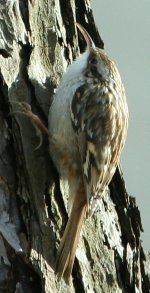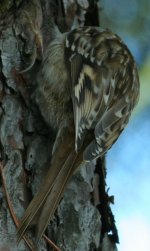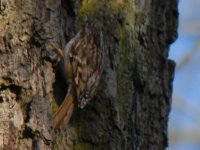Hi everybody!
Is this a Eurasian or short-toed treecreeper? It looks like a short-toed to me
1. clear white spots on primary tips
2. a bit brownish flanks, longer bill and short hindclaw (or it is just my imagination )
)
Now I know song is important, but I didn't know it while taking pictures! I must come back and listen to it again Anyway, are the photos enough to id this nice bird?
Anyway, are the photos enough to id this nice bird?
Thanks
Alexei
PS photographed a couple of days ago, not far from Paris.
Is this a Eurasian or short-toed treecreeper? It looks like a short-toed to me
1. clear white spots on primary tips
2. a bit brownish flanks, longer bill and short hindclaw (or it is just my imagination
Now I know song is important, but I didn't know it while taking pictures! I must come back and listen to it again
Thanks
Alexei
PS photographed a couple of days ago, not far from Paris.










